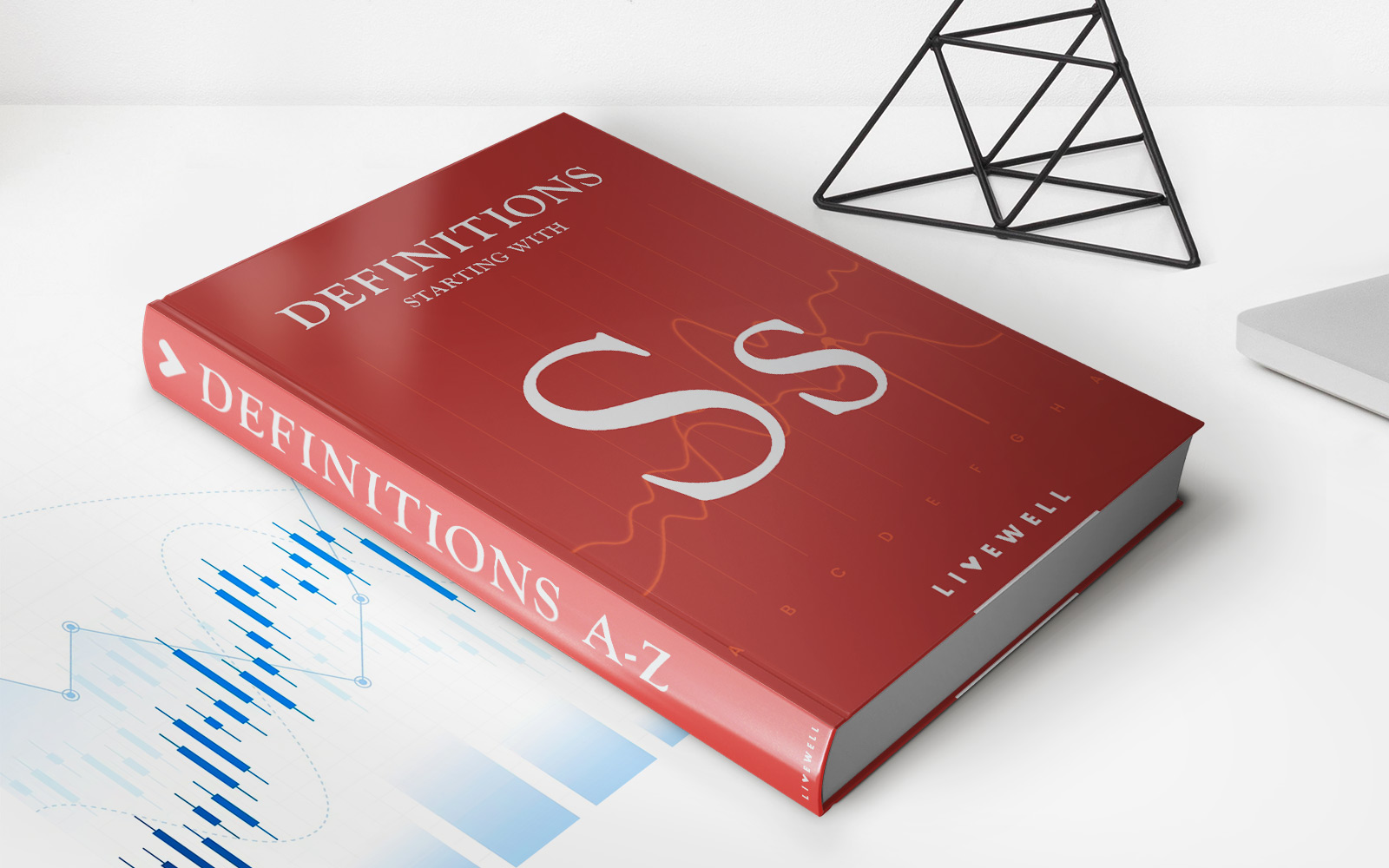Home>Finance>What Is The Total Credit Limit Of The Two Revolving Credit Card Accounts?


Finance
What Is The Total Credit Limit Of The Two Revolving Credit Card Accounts?
Published: February 29, 2024
Discover the total credit limit of two revolving credit card accounts and manage your finances effectively. Explore the benefits of understanding your credit limits in the world of finance.
(Many of the links in this article redirect to a specific reviewed product. Your purchase of these products through affiliate links helps to generate commission for LiveWell, at no extra cost. Learn more)
Table of Contents
Introduction
Revolving credit cards are a ubiquitous financial tool in today's world, offering users the flexibility to borrow funds up to a certain limit and repay them over time. Understanding the total credit limit of two revolving credit card accounts is crucial for managing finances effectively and making informed borrowing decisions. In this article, we will delve into the intricacies of revolving credit cards, explore the factors that determine the total credit limit, and provide valuable insights into maximizing this financial resource.
Revolving credit cards operate on the principle of granting users a predetermined credit limit, which can be utilized for various transactions, including purchases, balance transfers, and cash advances. Unlike installment loans, where a fixed amount is borrowed and repaid in regular installments, revolving credit allows users to carry a balance from one month to the next, subject to the payment of a minimum amount due. This flexibility makes revolving credit cards a popular choice for managing both planned and unexpected expenses.
By comprehending the nuances of revolving credit cards, individuals can make informed decisions about their financial well-being. This includes understanding the total credit limit of multiple revolving credit card accounts, which plays a pivotal role in shaping one's overall borrowing capacity and financial stability. Whether it's leveraging the benefits of multiple credit cards or optimizing credit utilization, knowing the total credit limit is essential for prudent financial management.
Throughout this article, we will explore the factors that influence the determination of the total credit limit, shedding light on the intricate mechanisms that underpin this fundamental aspect of revolving credit cards. By gaining a comprehensive understanding of these factors, individuals can navigate the realm of revolving credit with confidence, making strategic choices that align with their financial goals and aspirations.
In the subsequent sections, we will delve into the specifics of revolving credit cards, unravel the methodology for determining the total credit limit of two accounts, and examine the key factors that influence credit limits. By the end of this article, readers will have a profound understanding of how the total credit limit of two revolving credit card accounts is calculated and the strategies for optimizing this financial resource to achieve long-term financial well-being.
Understanding Revolving Credit Cards
Revolving credit cards represent a dynamic financial tool that provides users with the flexibility to borrow funds up to a predetermined credit limit, repay the borrowed amount, and borrow again as needed. Unlike traditional installment loans, which have a fixed repayment schedule and a set end date, revolving credit cards offer ongoing access to funds, allowing users to carry a balance from one billing cycle to the next, subject to the payment of a minimum amount due.
One of the distinguishing features of revolving credit cards is the revolving nature of the credit line. As users make payments towards their outstanding balance, the available credit replenishes, enabling them to borrow again within the specified credit limit. This characteristic makes revolving credit cards an invaluable financial resource for managing both planned expenses and unforeseen financial needs, providing a safety net for individuals facing temporary cash flow challenges.
Moreover, revolving credit cards often come with additional benefits, such as rewards programs, cashback offers, and introductory promotional rates, making them an attractive choice for consumers seeking to maximize the value of their spending. These perks, coupled with the flexibility to carry a balance, contribute to the widespread popularity of revolving credit cards in the realm of personal finance.
It is important to note that the utilization of revolving credit cards should be approached with prudence and discipline. While the flexibility offered by these cards can be advantageous, carrying a high balance relative to the credit limit can adversely impact one’s credit score and financial well-being. Therefore, responsible usage, timely repayments, and effective management of the total credit limit are essential for harnessing the benefits of revolving credit cards while maintaining a healthy financial profile.
By understanding the fundamental characteristics of revolving credit cards, individuals can make informed decisions about their borrowing habits, leverage the benefits of these financial instruments, and navigate the intricacies of credit management with confidence. In the following sections, we will delve deeper into the methodology for determining the total credit limit of two revolving credit card accounts, shedding light on the factors that influence this crucial aspect of personal finance.
Determining the Total Credit Limit
When managing multiple revolving credit card accounts, understanding the process of determining the total credit limit is essential for optimizing borrowing capacity and maintaining a healthy credit profile. The total credit limit of two revolving credit card accounts is calculated based on the individual credit limits assigned to each card. For instance, if one card has a credit limit of $5,000 and the other has a credit limit of $7,500, the combined total credit limit for both accounts would be $12,500.
It is important to note that the total credit limit represents the cumulative borrowing capacity across all active revolving credit card accounts. This figure influences the overall credit utilization ratio, which is a key factor in determining an individual’s credit score. The credit utilization ratio is the percentage of available credit that is being utilized, and lower utilization ratios are generally associated with better credit scores.
When determining the total credit limit of multiple revolving credit card accounts, it is crucial to consider the impact of credit limit increases or decreases initiated by the card issuer. Some credit card companies may offer periodic credit limit reviews, where they assess the cardholder’s creditworthiness and may adjust the credit limit accordingly. These adjustments can impact the total credit limit, potentially altering the borrowing capacity across all associated accounts.
Furthermore, individuals may have the opportunity to request credit limit increases on their revolving credit card accounts. By demonstrating responsible credit usage and a strong repayment history, cardholders can make a case for higher credit limits, thereby enhancing their total borrowing capacity. However, it is imperative to exercise prudence when seeking credit limit increases, as higher limits can lead to greater financial responsibility and potential risks if not managed effectively.
Understanding the process of determining the total credit limit of two revolving credit card accounts empowers individuals to make informed decisions about their borrowing habits, credit utilization strategies, and overall financial well-being. By monitoring and optimizing the total credit limit across multiple accounts, individuals can leverage the benefits of revolving credit while maintaining a balanced and sustainable approach to managing their finances.
In the subsequent section, we will explore the factors that influence credit limits on revolving credit card accounts, shedding light on the key determinants that shape borrowing capacity and credit management strategies.
Factors Affecting Credit Limits
The determination of credit limits on revolving credit card accounts is influenced by a myriad of factors, each playing a significant role in shaping an individual’s borrowing capacity and credit management landscape. Understanding these factors is paramount for navigating the realm of revolving credit cards and optimizing one’s financial resources effectively.
1. Credit History and Score: One of the primary determinants of credit limits is an individual’s credit history and credit score. Lenders assess an individual’s creditworthiness based on their repayment behavior, outstanding debts, and overall credit utilization. A strong credit history and a high credit score often translate to higher credit limits, reflecting the borrower’s demonstrated ability to manage credit responsibly.
2. Income and Financial Stability: Lenders also consider an individual’s income and financial stability when determining credit limits. A higher income and stable employment status can instill confidence in lenders regarding the borrower’s capacity to repay debts, potentially leading to higher credit limits on revolving credit card accounts.
3. Existing Debt Obligations: The presence of existing debt obligations, such as mortgages, auto loans, or other lines of credit, can impact the credit limits assigned to revolving credit card accounts. Lenders evaluate the borrower’s overall debt-to-income ratio to assess their ability to take on additional debt, which can influence the credit limits extended to the individual.
4. Utilization and Payment History: The utilization of existing credit lines and the payment history on revolving credit accounts are pivotal factors in determining credit limits. Responsible credit usage, timely repayments, and a history of managing credit effectively can contribute to favorable credit limit adjustments and potential credit limit increases over time.
5. Relationship with the Lender: For individuals with long-standing relationships with a particular lender, there may be opportunities to negotiate or request credit limit adjustments based on their history of responsible financial behavior and loyalty to the institution.
6. Economic Conditions: Macroeconomic factors, such as prevailing interest rates, economic stability, and industry-specific trends, can also influence the credit limits offered to individuals. During periods of economic uncertainty, lenders may exercise caution when extending credit, potentially leading to more conservative credit limit assignments.
By comprehending the multifaceted nature of the factors affecting credit limits on revolving credit card accounts, individuals can proactively manage their financial circumstances, optimize their borrowing capacity, and cultivate a healthy credit profile. In the subsequent section, we will delve into the implications of these factors and provide actionable insights for leveraging credit limits to achieve long-term financial well-being.
Conclusion
Understanding the total credit limit of two revolving credit card accounts is integral to effective financial management and prudent credit utilization. By delving into the intricacies of revolving credit cards, exploring the methodology for determining the total credit limit, and examining the factors that influence credit limits, individuals can navigate the realm of personal finance with confidence and strategic foresight.
Revolving credit cards offer unparalleled flexibility, allowing users to borrow funds up to a predetermined credit limit, repay the borrowed amount, and borrow again as needed. This dynamic nature of revolving credit empowers individuals to manage both planned and unforeseen expenses, providing a valuable financial safety net.
The process of determining the total credit limit of two revolving credit card accounts hinges on the individual credit limits assigned to each card. By aggregating these limits, individuals can ascertain their combined borrowing capacity, which significantly influences their overall credit utilization ratio and, consequently, their credit score.
Various factors, including credit history, income, existing debt obligations, payment history, and economic conditions, play a pivotal role in shaping the credit limits assigned to individuals. By comprehending these factors and their implications, individuals can proactively manage their credit profiles, optimize their borrowing capacity, and cultivate a healthy financial standing.
Ultimately, the prudent management of credit limits on revolving credit card accounts entails responsible credit usage, timely repayments, and a strategic approach to leveraging available credit. By exercising discipline and foresight, individuals can harness the benefits of revolving credit while safeguarding their long-term financial well-being.
As individuals navigate the landscape of personal finance, understanding the total credit limit of two revolving credit card accounts empowers them to make informed decisions, maximize their financial resources, and cultivate a sustainable approach to credit management. By embracing a holistic understanding of credit limits and their determinants, individuals can embark on a journey towards financial empowerment and stability.
In conclusion, the total credit limit of two revolving credit card accounts represents a cornerstone of prudent financial management, offering individuals the opportunity to leverage credit effectively, optimize their borrowing capacity, and shape a resilient financial future.














